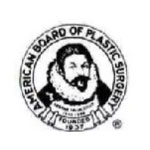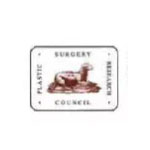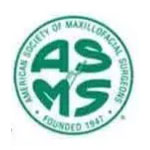Liposuction Dana Point

Liposuction is one of the most popular cosmetic surgery procedures performed for a number of reasons. Removing unwanted and unsightly pockets of fat from problem areas give patients a slimmed and contoured overall profile. For our Los Angeles, Orange County, and Inland Empire liposuction patients their transformation begins with an initial consultation with Dr Kalantarian Plastic Surgery in Orange County.
What is the difference between different types of liposuction: Liposuction the term originally used for removal of fat under the skin using a suctioning device. Therefore, traditional liposuction is referred to as suction assisted lipectomy. The technique utilizes small cannulas (metal hollow tubes that have different shape “blades‚Äù) and a vacuum assisted device (suction with a specific magnitude or millimeter of mercury) to remove fat cells from under the skin. The surgeon moves the cannulas back and forth in multiple orientations and removes the superficial and deep layer of fat.
Plastic Surgery can make you look younger
Breast Augmentations, Mommy Makeovers & Brazilian Butt Lifts
and other procedures in Orange County
SCHEDULE A CONSULTATION
Cost of Liposuction Dana Point, California
What Can I Expect from a Liposuction Procedure?
There are many techniques that can be used when performing Liposuction procedures. Each technique is performed by the Board Certified Plastic Surgeon, DR Kalantarian, MD, and will vary among patients and the area of the body requiring liposuction. The procedure involves the insertion of a cannula (a long, thin tube) through small incisions. The area of interest will be infused with a special solution (tumescent) to minimize risk of bleeding and help with post-operative pain. The most common technique (based on the amount of fluid infiltration with respect to fluid aspirated) is called super wet or tumescent technique that minimizes the risk of bleeding. The cannula is then moved back and forth by your plastic surgeon to vacuum fat cells from the targeted area. Following the procedure, patients typically return to work within a week depending on their level of physical activity at work. You will see a remarkable difference within a week after your liposuction in the targeted area; however, the full result of your liposuction procedure will be noted over several months as swelling subsides. Liposuction is effective and long lasting as long as you do not gain weight after the procedure. If the procedure is done by a board certified plastic surgeon in a fully accredited outpatient surgery facility, the procedure has an extremely high safety record leaving only small and inconspicuous scars.
What is the difference between different types of liposuction: Liposuction the term originally used for removal of fat under the skin using a suctioning device. Therefore, traditional liposuction is referred to as suction assisted lipectomy. The technique utilizes small cannulas (metal hollow tubes that have different shape “blades‚Äù) and a vacuum assisted device (suction with a specific magnitude or millimeter of mercury) to remove fat cells from under the skin. The surgeon moves the cannulas back and forth in multiple orientations and removes the superficial and deep layer of fat.
Advances in technology have resulted in implementation of different energy sources such as ultrasound wave or laser (witha specific wavelength) to remove the fat. Ultrasound assisted liposuction and VASER uses ultrasound energy to destroy the fat cells membranes (walls) by a process called cavitation before liposuctioning the fat. “Smart lipo‚Äù is a laser assisted lipolysis, it uses a fiber optic laser to melt or dissolve the fat cells and can be combined with liposuction in difficult areas. Laser assisted technology uses laser frequency and the energy emitted may damage the nerves and the skin if not done properly. Both ultrasound and laser energy can generate heat and cause thermal injury. VASER (using ultrasound energy) and laser assisted liposuction can minimize blood loss when a very large amount of liposuction is required (more than 5 liters). Some areas of the body such as upper back and depending of the skin elasticity may benefit from the newer type of liposuction. If the liposuction procedure is done by a well trained and experience plastic surgeon the same result can be achieved no matter what type of technology is used. The type of liposuction recommended depends on the experience of the plastic surgeon and body type. Suction assisted lipectomy does not cause any thermal injury because it does not generate heat.
Another advancement in liposuction technique is the use of a wetting solution as opposed to dry technique when the first liposuction was done. In order to minimize blood loss different wetting solutions have been developed both in constituents and quantity. When no wetting solution was used the amount of blood loss was significant. With addition of epinephrine (a vasoconstriction that causes blood vessels to shrink temporarily and lidocaine (causes temporary numbness to reduce pain) to the wetting solution, the amount of blood loss and bruising as well as discomfort has been reduced significantly. The amount of fluid infiltrated or infused in relation to the amount of fat removed (the ratio) describes classifies the technique into wet (minimal) super wet (1:1) and tumescent (3:1). When the procedure is done under general anesthesia super wet technique is used and tumescent technique is under local anesthesia.
Who Is a Good Candidate for Liposuction?
Most men and women have at least one area in the body that has retained fat, which may result from a genetic origin or life style and has not responded to diet and exercise. Liposuction is often the only way to improve these areas of the body. Each patient’s candidacy for a liposuction procedure is determined by many factors including: medical history, procedure expectations, and their skin tone and elasticity.
Ideal candidate: Someone with stubborn excess fat in areas such as abdomen, waist, back, arms, thighs, or pubic region that has been resistant to excessive and dieting.
One who is in a relatively good health (no bleeding, major cardiac/heart, pulmonary/lung, renal/kidney or central nervous disorder).
Must have good skin tone or elasticity without significant excess skin or saggy skin.
Safety tips: Make sure your surgeon is board certified by the American Board of Plastic Surgery. Must do the procedure in a fully accredited facility if done in an outpatient surgery center. Limit the amount of liposuction to less than 5 litters in an outpatient setting. Must be an ideal candidate.

Recovery after liposuction:
The recovery period is relatively quick. A patient may return to work within 5-7days. You must be off your narcotic pain medication to return to work. You need to limit your activity for about 2 weeks (avoid physical activities that causes an increase in your blood pressure or hear rate for about 3 weeks. Must apply the compression garment at all times for at least 3 weeks and then most of the time for about 5-8 weeks. The compression garment and limited activity minimizes risk of seroma formation (collection of fluid under the skin). If seroma develops, it will have to be aspirated with a needle one a week until it subsides (so you need to follow these instructions to prevent seroma formation).
If you would like to learn more, please schedule a free consultation by calling our office in OC at (714) 444-4495 or fill the online Consult form.











